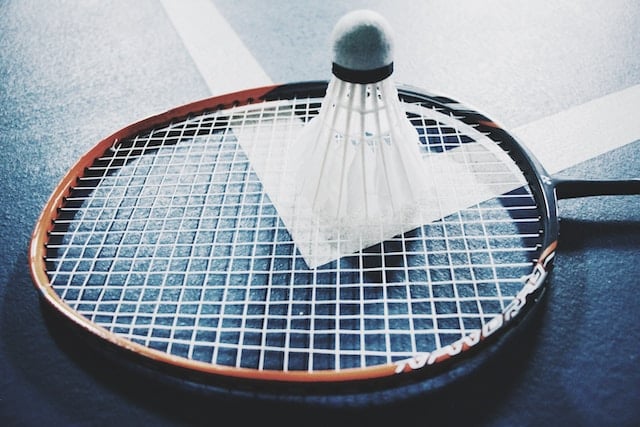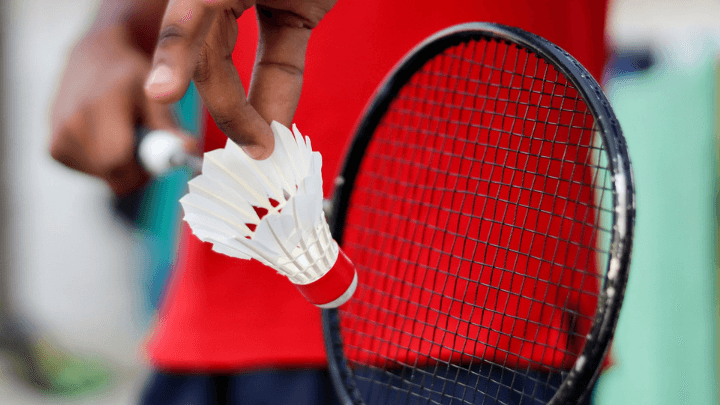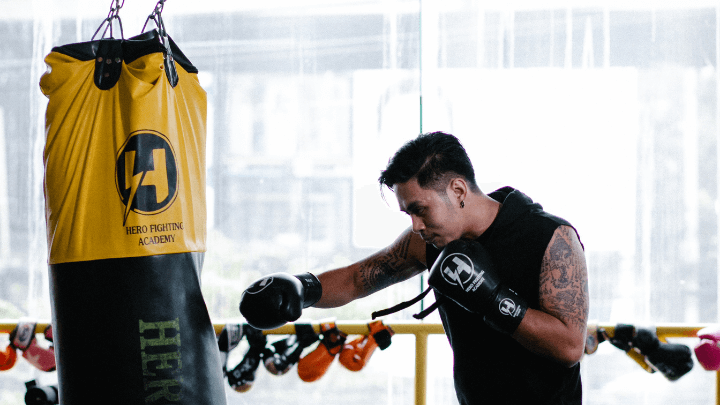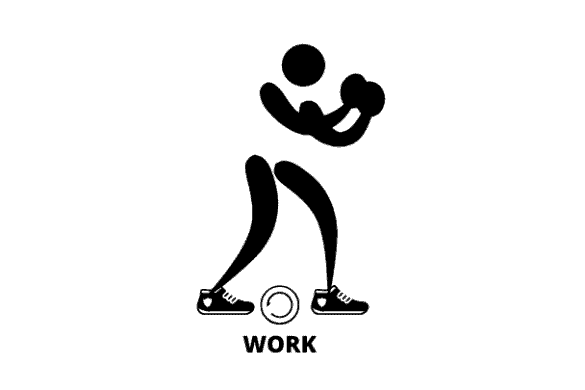Badminton can be both a team sport (doubles matches) and an individual sport (singles). It is your decision whether you want to partner up or have your side of the court to yourself.
This article is going to answer whether badminton is a team sport, as well as the most frequently asked questions about doubles and singles play in badminton.
Let’s jump into it.
How Badminton Can Be a Team Sport
Badminton can be a team sport when you are playing a game of doubles; two vs. two.
One of the reasons I always preferred playing doubles is that the camaraderie between partners is great.
You can verify this by looking at a video of any doubles game of your choice — doubles players rarely find fault in their partner on the court.
Instead, doubles players in badminton (literally) go to great lengths to rectify the mistakes made by their partners.
Good doubles’ sides function like a well-oiled machine in which every part (or, in our case, player) knows what function is expected of them.
In fact, since both doubles players depend on each other for success or failure, the shared level of responsibility is much higher than, say, soccer, where a whole team determines the fate of the match.
How Badminton Can Be Played Individually
Badminton can be played individually when you are playing a game of singles; one-on-one.
Singles badminton games might not create as much bonding between players as doubles matches.
However, by keeping both players on their toes, a singles match gets the best out of them, forcing them to up their fitness level.
It is for this reason that I always start with doubles whenever I’m making a comeback to the sport.
Months away from the court take a toll on my fitness level, leaving me with no choice but to ease myself into the game (by playing doubles) before I can acquire the fitness level needed to cover the entire court individually.
That is not to say that doubles matches are for couch potatoes.
It’s just that if you are not feeling that well (physically) but still want to play a game or two, a doubles game where you are supported by your partner offers an easy way back into the court than a grueling singles match where the opponent has the entire court to tire you out.
What Is Group Play In Badminton?
Group play in badminton takes place in competitions. Teams or players are divided into multiple groups.
All the sides in every group play all the other teams to establish a final points table based on the number of games won.
The top two teams from every group qualify for the next round, whereas the bottom teams are eliminated from the competition.
The top team from one group meets the 2nd best team from another group in the knockout stage, and vice versa.
Whenever I took part in a group stage tournament, I always tried my best to finish at the top of my group.
Not only because it set the bar for the remainder of the competition.
Finishing top of the group gave me the chance to play against the 2nd best (and supposedly weaker) team from the opposing group, potentially increasing my chances of progressing to the final rounds of the competition and even winning the whole thing.
How to Encourage Your Badminton Partner?
1. High Five Each Other
Whether you win or lose a point, high-five your opponent and tell them they are doing great.
Feels too much? In that case, use your racket to (gently) pat your partner on the back when the two of you lose a string of points or even a rally.
This will show your better-half-on-the-court that come what may, you believe in their ability to bounce back.
‘‘Touch predicts performance through fostering cooperation between teammates,’’ says Dacher Keltner, professor of social psychology at the University of California Berkeley. ‘‘You can communicate really important emotions like gratitude, compassion, love, and anger just through brief touches.’’
2. Never Argue on the Court
Even if your partner is having a bad day at the court, don’t call them out in public. Wait for the time when both of you will be alone in the dressing room.
Even then, don’t come out all guns blazing. Encourage your partner to analyze what went wrong on their own. Provided they are in the mood, both of you can sit together and take notes from the match’s video.
3. Set SMART Goals
SMART is an acronym that stands for:
- Specific
- Measurable
- Achievable
- Realistic
- Time-Bound
Being the number one team on the planet isn’t a SMART goal if you have just started playing. Coming out on top of your age group in the next X months is.
Consult with your partner as you’re making a list of goals to pursue. An individually prepared list with little to no contribution from your partner has little to no chance of spurring them into action.
Benefits of Playing Doubles in Badminton
1. Your Partner Has Your Back
Who do you look up to when you need help in a singles game? The person in the mirror (provided you have it courtside).
In contrast, your partner always has your back in doubles matches. This feeling, that someone is there to mop up your mistakes, frees you. You are thus more likely to go on the offensive and take on the opponent.
2. You Have to Cover Less Distance
Did you know that an average singles badminton player covers around 6.4km per game?
While no such estimate exists for doubles matches, it is a no-brainer that partnering up leaves you less exposed on the court. With your partner standing beside you, there’s no need for you to cover every nook and corner.
This makes doubles games attractive for an average person whose fitness level isn’t as high as needed to compete individually.
Related article:
Benefits of Playing Singles in Badminton
1. You Are Forced to Improve Your Fitness
Singles badminton players run more in 40 – 50 minutes (the average duration of a match) than tennis players scamper around in two hours and 45 minutes. They also have to hit nearly twice as many shots.
For this reason, they take every step possible to acquire the peak of their physical powers and remain there for as long as possible.
Related article:
2. You Learn to Take Full Responsibility
Singles players know that every win and every defeat will be theirs and theirs alone. There will be no one else to share the blame if things suddenly start going south.
This realization forces them to take full responsibility for all their actions, both on the court and off it.
Conclusion
Badminton offers you the best of both worlds. You can play the game with a partner or have your side of the court all yours. No team sport offers this sort of freedom.
Now I’d like to hand over the mic to you:
- Do you like singles or doubles matches?
- What is it you like about them?
- Anything badminton-related you want to share with me?
Feel free to reach out to me in the comments section below, I’d love to answer your questions and hear your feedback. We are also on Instagram @healthyprinciples_.







